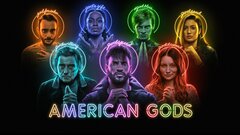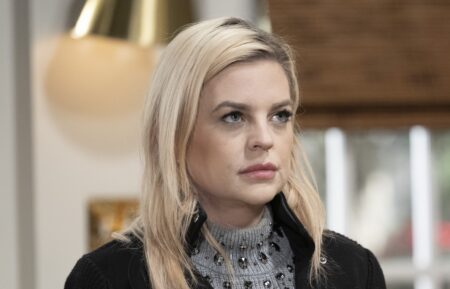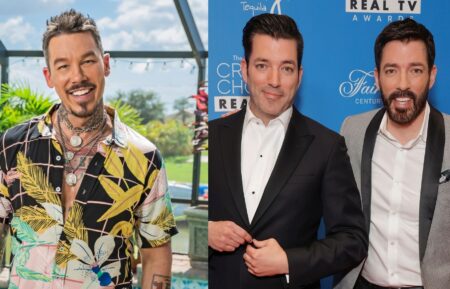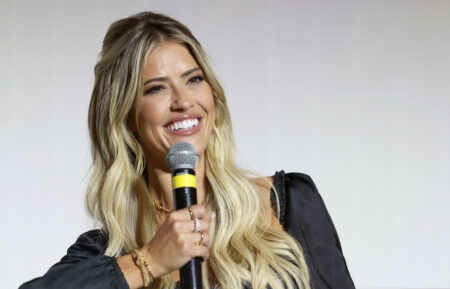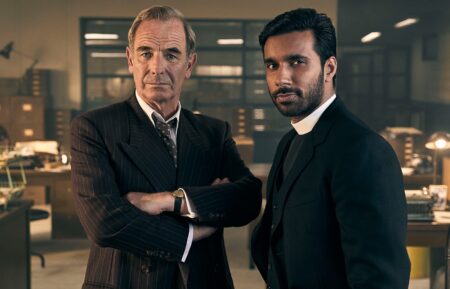Meet ‘American Gods’ Anansi, Czernobog and The Zorya Sisters
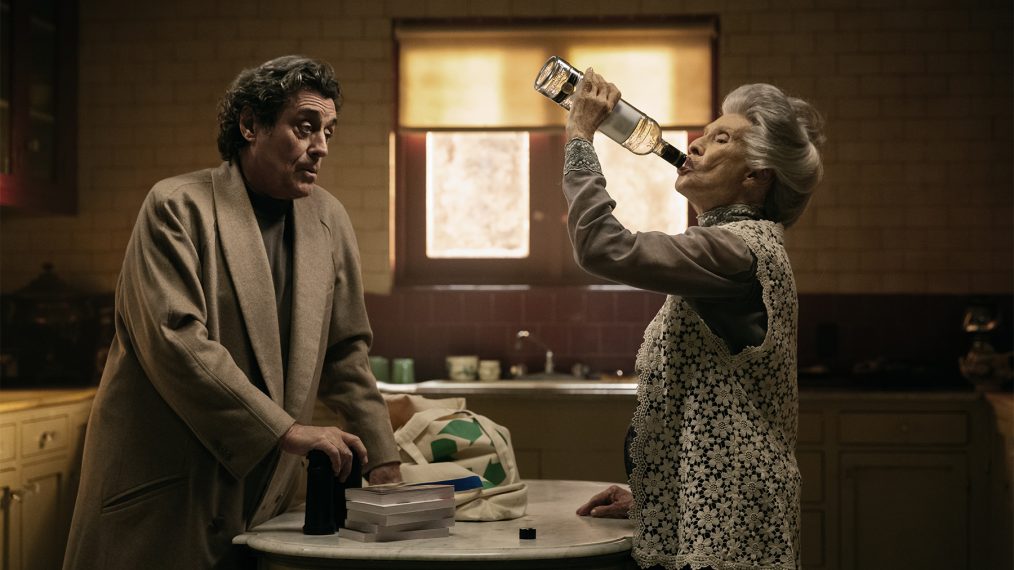
When a Norse god like Mr. Wednesday says he’s going to get his “hammer,” visions of a Hemsworth-esque goliath spring to mind. Sunday’s American Gods quickly dashed those expectations by revealing that Wednesday was taking Shadow to Chicago to meet a much greasier, ornerier old god.
Episode 2 of Gods introduced Czernobog (Peter Stormare) as a cow-slaughtering curmudgeon living in a rundown apartment with three other Slavic deities: Zorya Vechernyaya (Cloris Leachman), Zorya Utrennyaya (Martha Kelly), and their as yet unseen sister Zorya Polunochnaya (Erika Kaar).
Separate from the modern-day storyline, the episode’s cold open also gave a quick “Coming to America” intro to Anansi (Orlando Jones), who will eventually be known on the show as Mr. Nancy.
This second installment of our American Gods mythology breakdown will explain the origins of each of these new old faces.
Anansi
Mr. Nancy doesn’t see much to be optimistic about as he looks at what’s to come for black people in America. For him, all of African American history, from the slave ship he finds himself on to the modern era of social injustice and police brutality, can be boiled down to one pithy fairy tale: “Once upon a time, a man got f—ked.”
Throughout his history as a folklore figure, Anansi’s tricks, turns of phrase and impulses to test the boundaries of established social hierarchies have made him both outcast and hero. Originating in the Asante culture of Ghana, Anansi is a spider who is a collector of wisdom and a master storyteller. Despite his unimposing stature, he uses his cunning and oratory skills to get the better of powerful adversaries. In his original Ghanaian context, Anansi was a trickster who tested the boundaries set in place by gods, such as the almighty Nyame, in mostly harmless ways. With the rise of slavery, though, came an increase in relevance for a figure dedicated to resisting authority.
The version of Anansi that made it to Jamaica, the Caribbean and America was more aggressive, and he often served as a symbol of resistance for enslaved people. Instead of tales of testing the limits of a society that people wanted to stay intact, Anansi stories shifted more into the territory of subverting and dismantling institutions from a seemingly powerless position. Likewise, Anansi’s targets broadened from things like animals and gods to include real-world oppressors like slave masters.
Czernobog
Czernobog’s greatest contribution to American popular culture is traumatizing generations of unsuspecting children as the mountain-sized, demon-summoning monstrosity in Disney’s Fantasia. If that’s where he was coming from, the American Gods version of the Slavic god of evil and darkness has not aged gracefully.
Mr. Wednesday and Shadow find Czernobog as a washed-up slaughterhouse worker with a battered sledgehammer, living in a crummy Chicago apartment with three roommates. Not much is known about the Slavic mythology of Czernobog, the Black God, other than that he stands for darkness, evil, death and other generally bad and unpleasant things. Despite this, the other gods, including his (historically largely hypothetical) White God counterpart, Belobog, begrudgingly respect him.
Czernobog also stands in for a Grim Reaper figure in his American Gods debut, leaning into the common trope of Death playing a board game with his victim. The idea of a chess match with Death entered modern cultural consciousness through Ingmar Bergman’s 1957 film The Seventh Seal, but the idea originates hundreds of years earlier, as evidenced by medieval artwork like the Täby kyrka in Sweden. Czernobog prefers checkers, and, of course, insists on playing as black.
The Zorya Sisters
Something about Cloris Leachman gives off the vibe that she’s the kind of lady who could down an entire bottle of vodka in one chug. That’s exactly how her old goddess, Zorya Vechernyaya, the eldest of the three Zorya in American Gods, is introduced.
In Slavic myths, Zorya Vechernyaya and her sister Zorya Utrennyaya are in charge of opening and closing the gates for the sun chariot at the beginning and end of its journey across the sky. Just as importantly, the two are charged with monitoring the chains of the doomsday monster, Simargl, who is bound to the star Polaris in the constellation Ursa Minor. Utrennyaya, the Morning Star, takes the early shift, and Vechernyaya, the Evening Star, takes the night shift. In American Gods’ version, the third sister, Polunochnaya, takes the swing shift as the Midnight Star.
According to the source mythology, Simargl is usually a winged hound, but the monster on the show takes the form of a bear, which is probably a reference to the name of the constellation where it’s chained up. Naming constellations after bears (Ursa Minor and Ursa Major) dates back to the ancient Greeks and stories of Zeus placing bears in the sky. Also, a doomsday bear just sounds a little cooler than a doomsday dog.



